10.1 Art Images for The Tragedie of Macbeth (1606)
Selected Art Images and Related Quotes for MacBeth by WIlliam Shakespeare
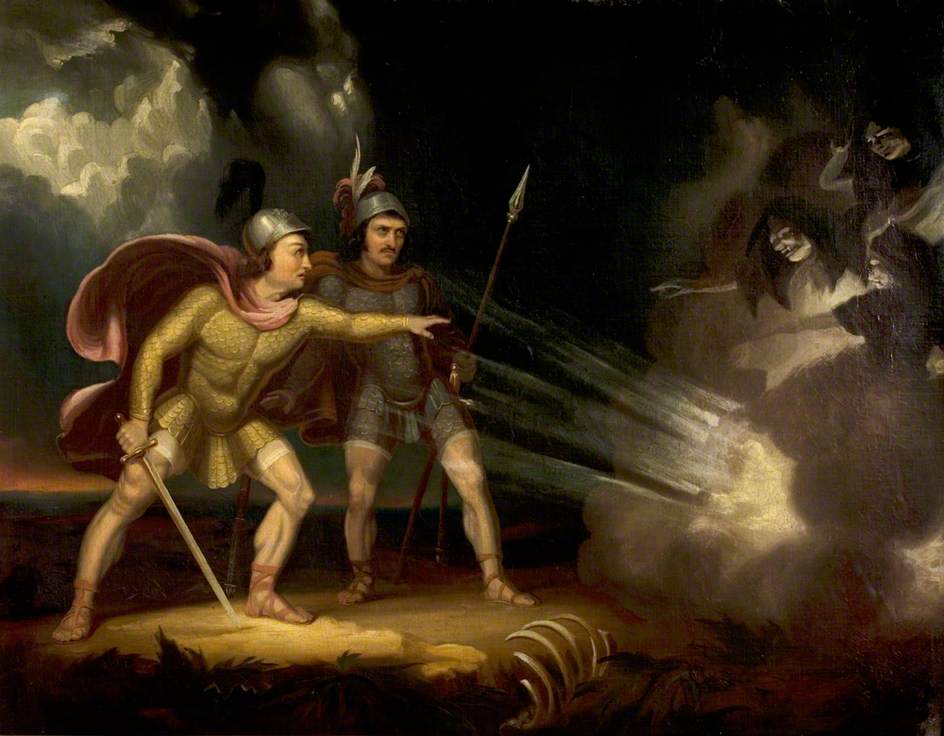
Samuel John Egbert Jones. Macbeth, Act I, Scene 3, The Weird Sisters, Royal Shakespeare Company Collection. Stratford, England. B y Samuel John Egbert Jones – https://artuk.org/discover/artworks/macbeth-act-i-scene-3-the-weird-sisters-
The Tragedie of MacBeth Synopsis (Folger Shakespeare Library)
“Macbeth, set primarily in Scotland, mixes witchcraft, prophecy, and murder. Three “Weïrd Sisters” appear to Macbeth and his comrade Banquo after a battle and prophesy that Macbeth will be king and that the descendants of Banquo will also reign. When Macbeth arrives at his castle, he and Lady Macbeth plot to assassinate King Duncan, soon to be their guest, so that Macbeth can become king.
After Macbeth murders Duncan, the king’s two sons flee, and Macbeth is crowned. Fearing that Banquo’s descendants will, according to the Weïrd Sisters’ predictions, take over the kingdom, Macbeth has Banquo killed. At a royal banquet that evening, Macbeth sees Banquo’s ghost appear covered in blood. Macbeth determines to consult the Weïrd Sisters again. They comfort him with ambiguous promises.
Another nobleman, Macduff, rides to England to join Duncan’s older son, Malcolm. Macbeth has Macduff’s wife and children murdered. Malcolm and Macduff lead an army against Macbeth, as Lady Macbeth goes mad and commits suicide.
Macbeth confronts Malcolm’s army, trusting in the Weïrd Sisters’ comforting promises. He learns that the promises are tricks, but continues to fight. Macduff kills Macbeth and Malcolm becomes Scotland’s king” (Folger Shakespeare Synopsis).
Art Images for Macbeth (1606) by William Shakespeare
“By the pricking of my thumbs,
Something wicked this way comes…” (Shakespeare, 1606/1978, The Tragedie of Macbeth, 4, 1. 44-45)
Macbeth like a number of Shakespeare’s tragedies is rooted on a crime. Very different artistic versions and visions of the three witches from MacBeth (1606) . MacBeth was lured by their prophecies to his own demise. Which artistic vision best represents the witches based on your own reading and interpretation of MacBeth? MacBeth’s rapacious greed and ambition is gradually controlled by his obsessive and haunted mind. Is he a victim of his superstition and willing to listen to the Weird Sisters’ prophecies or to their promptings which confirm his beliefs and actions? Drawn from Scottish historical chronicles, Shakespeare condensed Macbeth’s seventeen year reign into a series of weeks that unfold murder, a descent into madness, and tragedy. Rouse (1978) suggests that Shakespeare’s portrayal of Macbeth as a flawed, conflicted, and ultimately tragic character may have reflected “the Celtic custom of tanistry, the Gaelic and Irish tradition that which the succession of the throne went to the “worthiest” chieftan. “The rule of succession to a throne was uncertain, and left it wide open to murder”(Rouse, 1978, p. 414). The horror and tragedy of the play is amplified with the inclusion of the uncanny and supernatural. The Three Witches represent evil, darkness, chaos, and conflict. They appear to be omens of misfortune and tragedy, bordering the world of reality and the supernatural. Macbeth’s gullibility and craven ambition make him vulnerable to their ominous mischief. The witches’ famous chants of “fair is foul and foul is fair/Hover through the fog and filthy air” establish the moral hypocrisy, confusion, and terror pervading the play.
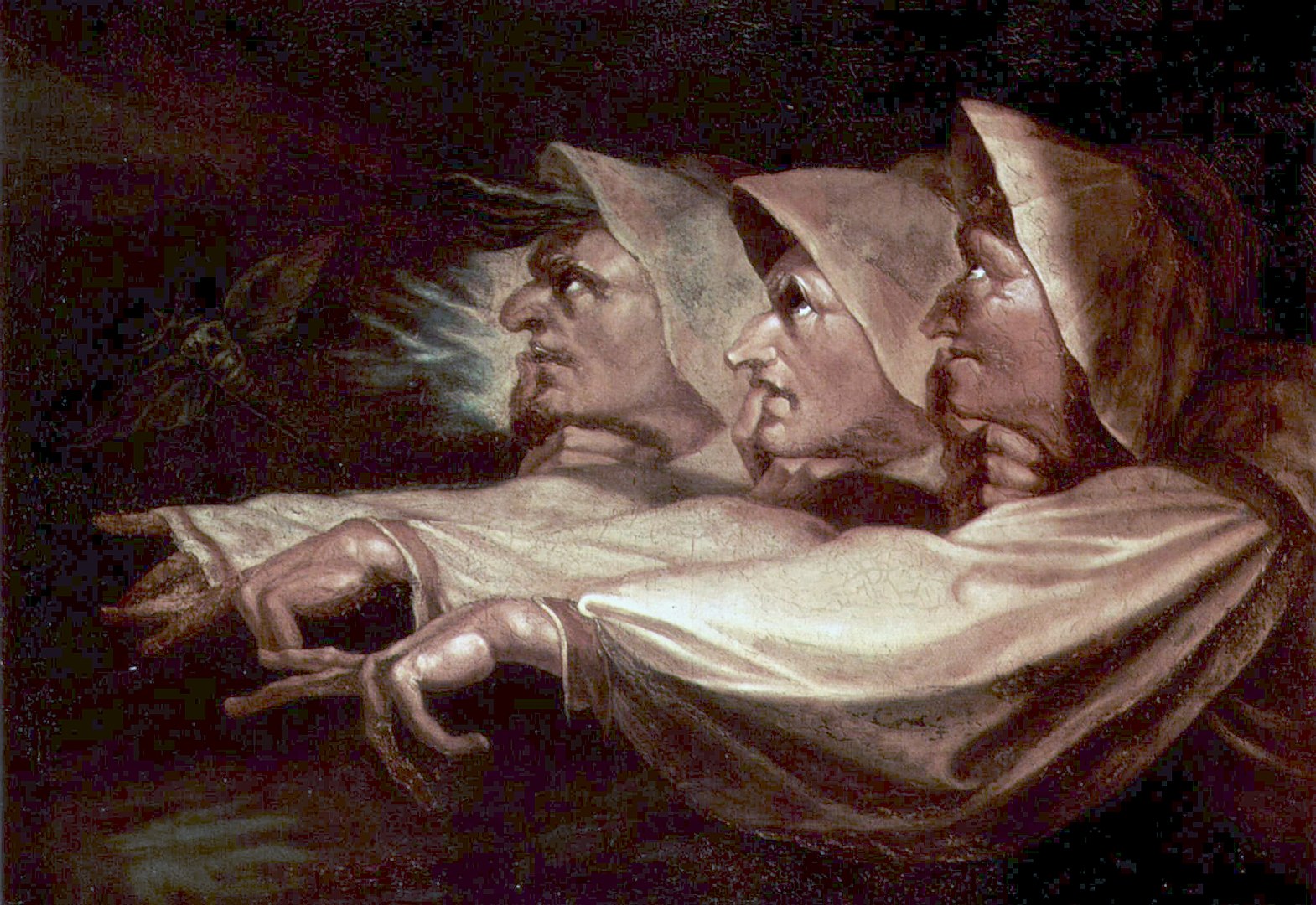
The Weird Sisters
“The weird sisters, hand in hand,
Posters of the sea and land,
Thus do go about, about:
Thrice to thine and thrice to mine
And thrice again, to make up nine.
Peace! The charm’s wound up.” (Shakespeare, 1606, The Tragedie of Macbeth, 1. 3)
“Double, double, toil and trouble;
Fire burn, and cauldron bubble.
Fillet of a fenny snake,
In the cauldron boil and bake;
Eve of newt and toe of frog,
Wool of bat and tongue of dog,
Adder’s fork and blind-worm’s sting,
Lizard’s leg and howlet’s wing,
For a charm of powerful trouble,
Like a hell-broth boil and bubble.” (Shakespeare, 1606, The Tragedie of Macbeth, 4. 1.)
Daniel Gardner’s Interpretation of the Three Witches
“Fair is foul, and foul is fair:
Hover through the fog and filthy air” (Shakespeare, 1606, The Tragedie of Macbeth, 1.1.)
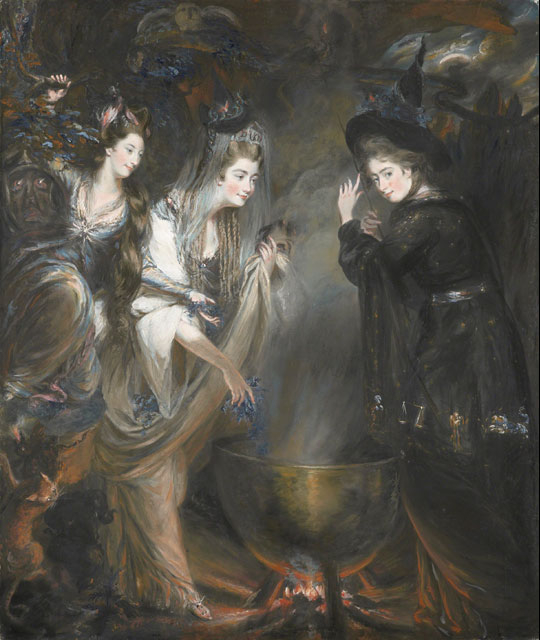
“This unusual group portrait depicts three of the most politically influential and socially affluent women of the period. They are, from left to right, the society ladies and political hostesses Elizabeth Lamb, Viscountess Melbourne, Georgiana, Duchess of Devonshire and the sculptor Anne Seymour Damer. All three women were intimate friends sharing a common passion for Whig politics and the arts. Whereas Lady Melbourne had been friends with Anne Seymour Damer since the early 1770s, the friendship with Georgiana was fairly recent and this pastel may in part be related to Melbourne’s desire to celebrate their new-found friendship. While all three women are described as having enjoyed attending private theatricals and tableaux vivants, Daniel Gardner’s choice of the cauldron scene from Macbeth can also be related to their shared and shadowy political machinations as leading members of the Devonshire House circle, which became a focal point.” (National Gallery of Art Notes, London, England).
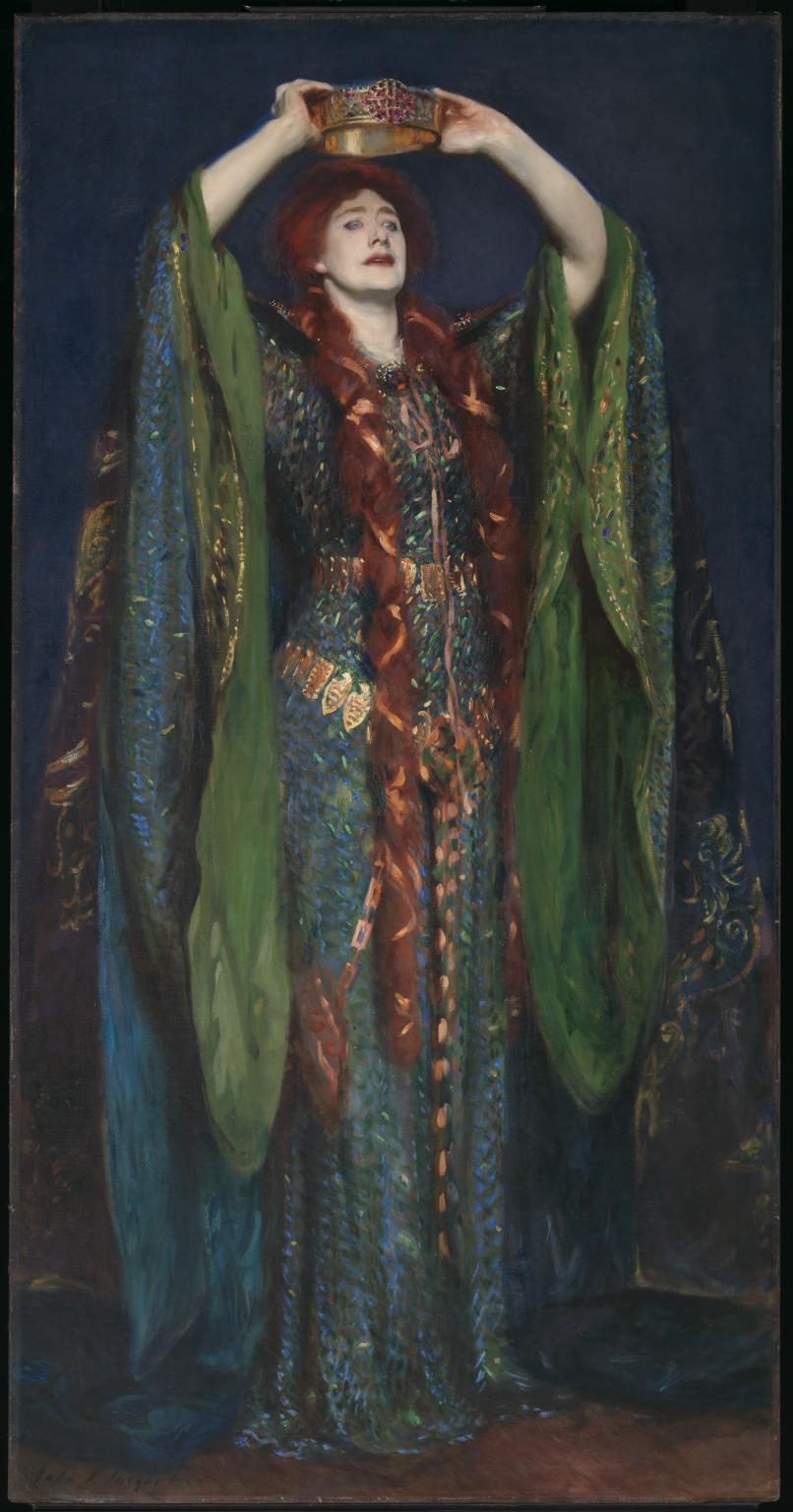
“Come, you spirits That tend on mortal thoughts, unsex me here, And fill me from the crown to the toe top-full Of direst cruelty! Make thick my blood; Stop up the access and passage to remorse, That no compunctious visitings of nature Shake my fell purpose, nor keep peace between The effect and it” (Shakespeare, 1606, The Tragedie of Macbeth, 1. 5).
Lady Macbeth is a powerful presence and leading character in William Shakespeare’s tragedy Macbeth (c.1603–1607). She encourages her husband (a Scottish nobleman) to commit regicide in order to advance their own political and social ambitions. She tells her husband to forgo any empathy and “milk of human kindness” in order to give way to bold treachery:
“Your face, my thane, is as a book where men
May read strange matters. To beguile the time,
Look like the time; bear welcome in your eye,
Your hand, your tongue: look like the innocent
Flower, But be the serpent under’t.” (Shakespeare, 1606, The Tragedie of Macbeth, 1.5.).
The train of murders committed by the Macbeths begin to take a psychological toll. Guilt, remorse, and hallucinations take over and their ambitions unravel. Lady MacBeth begins to sleep walk and her famous lines “Out out damned spot” reflect her remorse and the corrosive impact of her murderous actions. Her death (later in Act 5) devastates Macbeth and it becomes the source of his “tomorrow and tomorrow and tomorrow” speech.
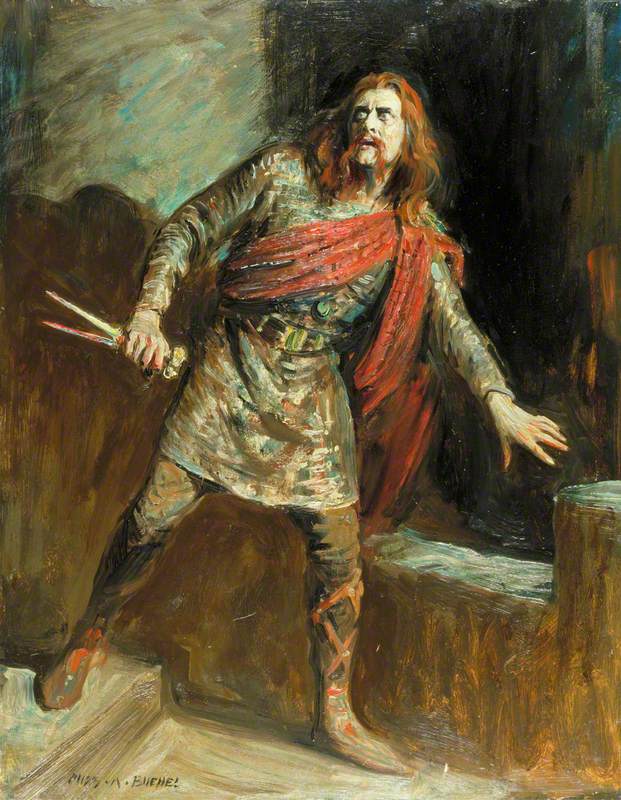
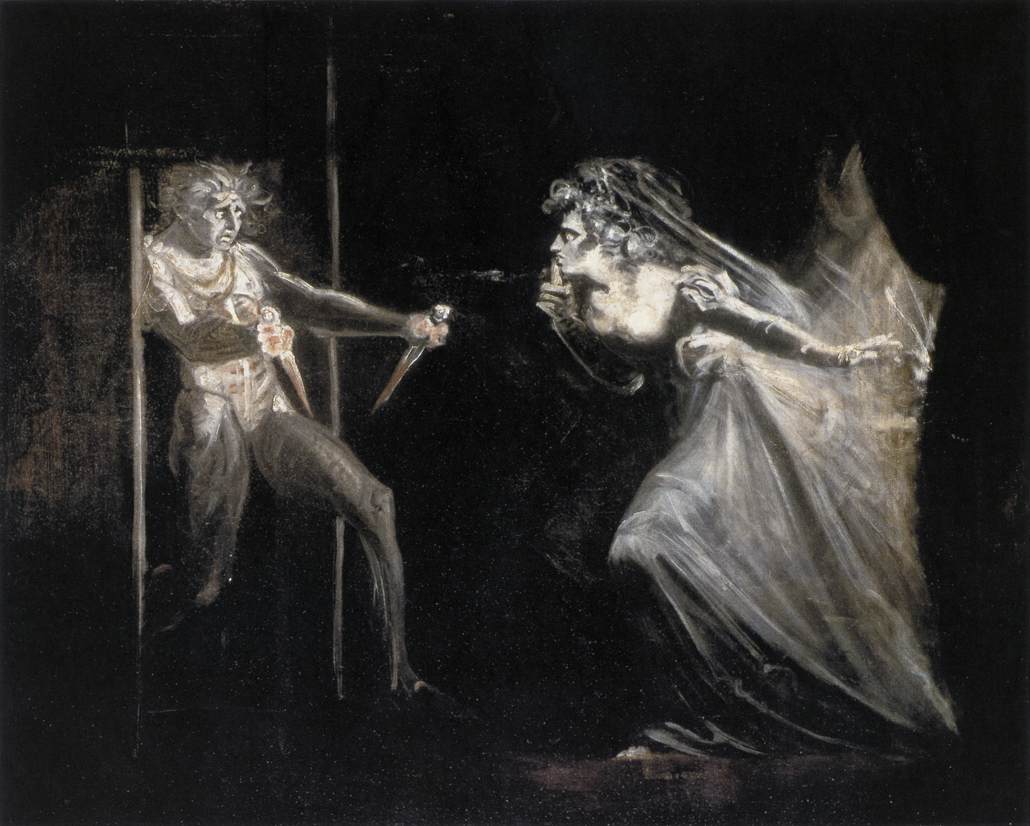
The artist Henri Fusseli captures the contradictions in Shakespeare’s tragedies of promise, potential, rapacious ambition, and vulnerability. The grotesque was often juxtaposed with beauty and innocence with guilt. His mesmerizing artistic works continue to inspire artists today. Fusseli’s art reflect the panorama of emotions.
The complete text of MacBeth can be found here.

